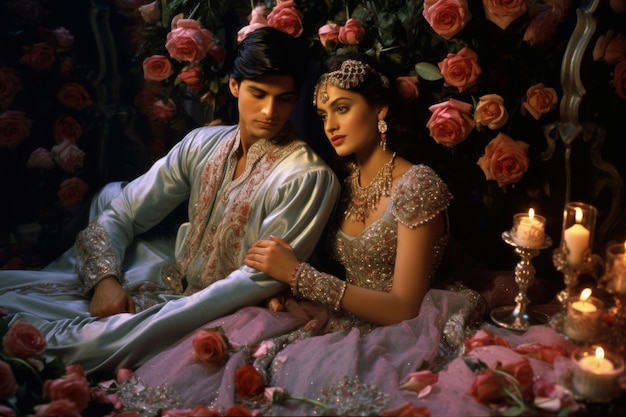
Want a taste of romance from the 19th century? Author Tara Johnson delves into this in her historical romance novel, All Through the Night, as well as the courting customs of the 1800s.
Chaperoned conversations, strolls, carriage rides, dances, and parties are what we typically think of when imagining Victorian romance. However, romance during that time had much more depth and complexity.
Social Introductions and Secret Codes:
In the 1800s, if a gentleman saw a young lady at a social event, they couldn’t simply approach her; they needed a proper introduction through mutual acquaintances. The social scene was challenging, especially considering the intricate codes women used with their parlor fans to convey messages. For instance:
– Fan resting on the left cheek: Not interested
– Fan resting on the right cheek: Interested
– Passing the fan through the hand: I hate you
– Hiding eyes behind an open fan: I love you
If a man found a lady he liked and wanted to accompany her home under her chaperone’s watchful eye, he would present his card. At the end of the event, she would review the collected cards and pick her preferred suitor.
Courting and Gifting:
If the gentleman wished to pursue a courtship, he’d write to the young lady’s father to seek permission. This involved strict guidelines. As Emily Thornwell highlights in The Lady’s Guide to Perfect Gentility (1856), letters of introduction remained unsealed, while letters to a superior were carefully folded and sealed with red wax.
Once the father gave his approval, the young lady would invite the gentleman to call on her, though she had to appear as if she was doing him a favor. Courting activities included parlor games, singing, playing piano, and conversing.
According to T. S. Arthur’s Advice to Young Ladies, women should not accept gifts from gentlemen unless they were fruit, flowers, or candy. These items were perishable and did not break the social norms prohibiting enduring tokens.
Floriography, or the language of flowers, was essential in conveying emotions. Flowers like daffodils symbolized new beginnings, daisies stood for innocence, lilacs represented the first emotions of love, and periwinkles denoted tender recollection. Flowers were a way to express complex feelings discreetly.
Expressing Love and Marriage:
During the Civil War, couples often exchanged passionate letters. This era saw faster engagements and marriages, driven by the uncertainty of life.
In All Through the Night, surgeon Joshua Ivy and nurse Cadence Piper navigate the chaos of war, and their mutual attraction raises concerns about reputations. Cadence’s love for Joshua intensifies as they face societal expectations and wartime pressures.
Modern Views on Historical Romance:
While the rituals of the Victorian era may seem distant, they share similarities with today’s digital communications. The nuances of a parlor fan are not unlike today’s intricate text messages. Both eras show that romance transcends time; it’s shaped by both following and breaking the rules.
About the Novel:
All Through the Night follows Cadence Piper, determined to become a nurse after her mother’s death, and Joshua Ivy, a dedicated surgeon. Their lives intertwine amidst the chaos of the Civil War, discovering a secret society that could change their lives and the war’s course.
About Tara Johnson:
Tara Johnson is a storyteller who shares her journey to freedom from societal expectations through her writing. She has authored three Civil War-era novels: Engraved on the Heart, Where Dandelions Bloom, and All Through the Night. Tara lives in Arkansas with her family and is a member of American Christian Fiction Writers.

